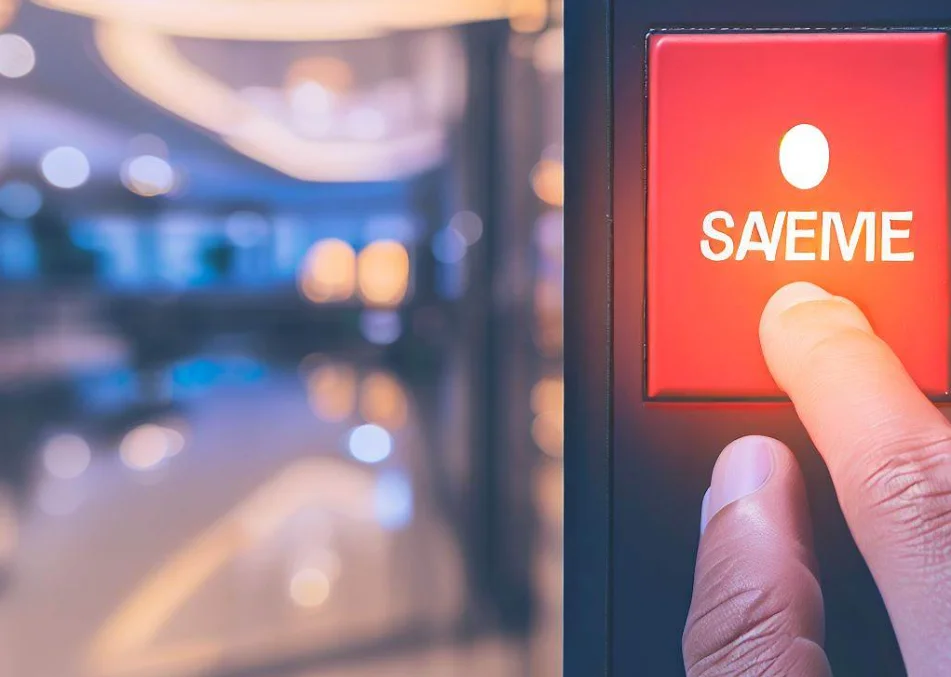The hotel industry has taken significant steps to prioritize employee safety, especially for housekeepers who often work alone and are vulnerable to unwanted behavior. Panic button devices have become a popular solution, providing housekeepers with a reliable way to call for help during emergencies or uncomfortable situations.
However, with so many panic button systems on the market, it can be challenging to choose the right one for your hotel. Cost is a critical factor, as there is typically a technology budget in place. Still, there are other essential features to consider when selecting a hotel panic button system.
Why is it essential to carefully select the right panic button system for your hotel?
As hotels prioritize employee safety, the implementation of a panic button system has become a popular solution to protect housekeepers and other employees from unwanted behavior or dangerous situations. However, selecting the right panic button system for your hotel is crucial, as not all systems are created equal.
One critical factor to consider is the ease of use of the panic button device. It should be simple to activate, with clear instructions and a straightforward process. Additionally, the device should provide location tracking, allowing hotel security to quickly locate the employee in distress.

Cost is another key factor to evaluate when selecting a panic button system. Some systems charge a monthly subscription fee, while others require a one-time purchase. It’s important to understand all associated fees and weigh them against the features provided.
Integrations with existing hotel communication platforms, such as radios or phones, can also help reduce costs and streamline communication during emergencies.
Implementing a safety procedure and training program can also help reduce existing insurance costs and demonstrate a commitment to employee safety. By taking proactive steps to prevent incidents and protect employees, hotels can potentially lower their insurance premiums and save money in the long run.
What are some additional features to consider when selecting a hotel panic button system?
When selecting a hotel panic button system, there are additional features to consider beyond the core functionalities. These features can enhance the overall effectiveness of the system and improve employee safety.
One crucial feature is the ability to customize alerts and notifications. The panic button system should allow hotel administrators to set up different types of alerts based on the severity of the situation. For example, a high-priority alert may indicate a potentially life-threatening situation, while a low-priority alert may signal a less urgent situation.
Another important feature is the ability to integrate the panic button system with existing hotel communication platforms, such as radios or phones. This integration can streamline communication during emergencies and reduce the need for additional equipment and associated costs.
In addition, some systems offer real-time reporting and analytics, allowing hotel administrators to track and analyze panic button usage. This information can help identify trends and areas where additional safety measures may be needed.
It’s also important to consider the durability and reliability of the panic button device and the system as a whole. The device should be able to withstand potential wear and tear from daily use, and the system should have reliable connectivity and backup capabilities in case of power outages or other disruptions.
Finally, selecting a panic button system that is compliant with all applicable regulations and standards is crucial. The system should meet all relevant safety and security requirements and be regularly tested and updated to ensure compliance.
How can hoteliers save on costs when implementing a panic button system?
Implementing a hotel panic button system is essential for protecting the safety of employees, but it’s also important to consider the associated costs. There are ways hoteliers can save on costs when implementing a panic button system.
One way to save on costs is to consider the total cost of ownership (TCO) of the system. This includes both the upfront capital expense (CAPEX) and the recurring operational expense (OPEX). Hoteliers should evaluate the TCO of different systems and weigh the costs against the features provided.
Another way to save on costs is to consider the potential for integrations with existing hotel communication platforms. Integrating the panic button system with existing platforms such as radios or phones can streamline communication during emergencies and reduce the need for additional equipment and associated costs.
Hoteliers can also save on costs by negotiating with vendors. It’s important to understand all associated fees and costs and negotiate with the vendor to find a mutually beneficial agreement. Hoteliers should also consider the potential for volume discounts if implementing the system across multiple properties.
Regular maintenance and updates can also help reduce long-term costs. By ensuring the panic button system is properly maintained and updated, hoteliers can minimize the risk of system failures and associated repair costs.
